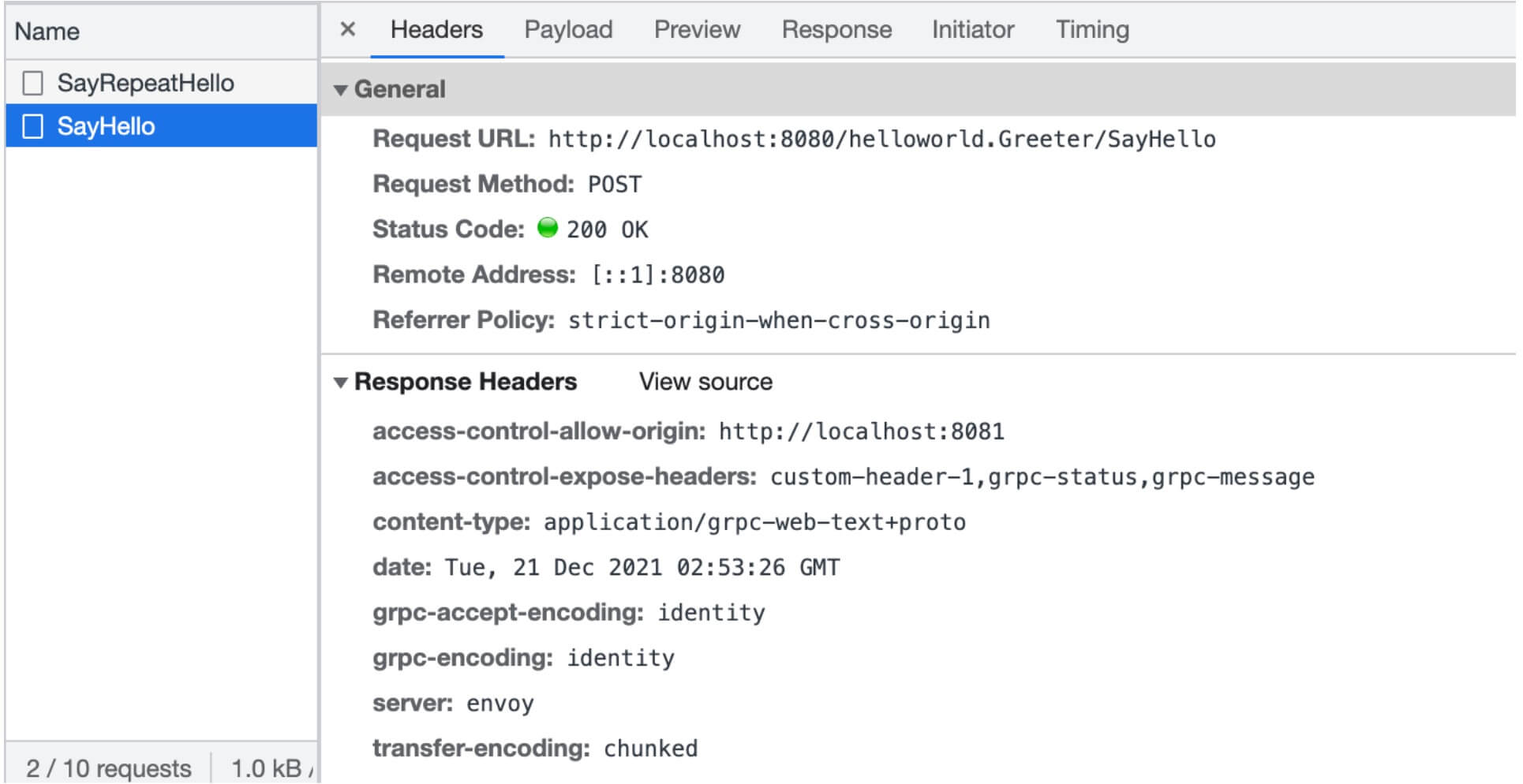Recently researching the technical feasibility of blockchain wallet plugins, which involves gRPC technology. The official repo has a demo, but getting it running normally has some barriers, so I’m summarizing here.
Installation
protobuf
# Recommended installation method, no need for additional compilation and environment variable configuration, https://formulae.brew.sh/formula/protobuf
brew install protobuf
# Verify successful installation
protoc --version
protoc-gen-grpc-web
To generate Web client code for PB-defined services, this tool needs to be installed
protoc-gen-grpc-web needs to be manually installed. Visit https://github.com/grpc/grpc-web/releases
For example, for my Intel Mac, download protoc-gen-grpc-web-1.3.0-darwin-x86https://grpc.io/_64
Execute the following commands
sudo mv ~/Downloads/protoc-gen-grpc-web-1.3.0-darwin-x86_64 \
/usr/local/bin/protoc-gen-grpc-web
sudo chmod +x /usr/local/bin/protoc-gen-grpc-web
Same as above, if typing protoc-gen-grpc-web in the terminal shows recognition, it means installation was successful.
protoc-gen-grpc-web installation is too troublesome. Setting a flag here to maintain an npm package to make it easier for everyone to download and install.
Brew Usage Supplement
brew search packagecan search for what version sources a package hasbrew install package@versionNumbercan directly install the target version
Testing
Generate corresponding JS code according to the defined PB format file.
$ protoc -I=. helloworld.proto --js_out=import_style=commonjs:. --grpc-web_out=import_style=commonjs,mode=grpcwebtext:.
Build and Startup
After completing the above steps, environment-level issues are resolved. Then just follow the startup steps in the readme step by step.

Note
If the development machine is a Mac platform, the following two modifications are needed:
envoy.yaml configuration modification
address: host.docker.internalNote: only this line needs to be modified
Docker startup command adjustment - remove network setting
docker run -d -v "$(pwd)"/envoy.yaml:/etc/envoy/envoy.yaml:ro \ -p 8080:8080 -p 9901:9901 envoyproxy/envoy:v1.20.0
Error
Http response at 400 or 500 level
After startup, if you encounter this error, it means network services are not communicating. Check if services started normally, for example, if the above proxy configuration error caused container communication issues. If an envoy proxy node goes down, it can also cause this error.
Common Issues
Encountered some problems when using grpc-web. The official documentation and community are not very active, so many pitfalls have to be discovered through personal experience. Here I summarize some common issues.
grpc: received message larger than max (1094796627 vs. 4194304)
When encountering this error, there are two possible situations
Size Settings
grpc.max_send_message_lengthsetting, unit is bytes,-1means no limit- Server/client settings are independent of each other
Official configuration see https://grpc.github.io/grpc/core/group__grpc__arg__keys.html#gab4defdabac3610ef8a5946848592458c
–grpc-web_out
Determine whether the WEB output mode is grpcwebtext or grpcweb. If it’s grpcweb but ultimately sends binary, it will report received message larger than max, up to 1G.
$ protoc -I=. helloworld.proto --js_out=import_style=commonjs:. --grpc-web_out=import_style=commonjs,mode=grpcweb:.
413 (Request Entity Too Large)
- Check nginx
client_max_body_sizeconfiguration - Confirm grpc-server side
grpc.max_receive_message_lengthconfiguration
Custom Header Fields
Sometimes when sending requests, you want custom headers, for example to implement dynamic proxy for gRPC services.
Implementation requires 2 parts of configuration
var client = new GreeterClient('http://' + window.location.hostname + ':9090', null, null);
// simple unary call
var request = new HelloRequest();
request.setName('World');
client.sayHello(request, {
'X-Grpc-node': 'hello world' // 自定义头部字段
}, (err, response) => {
if (err) {
console.log(`Unexpected error for sayHello: code = ${err.code}` + `, message = "${err.message}"`);
} else {
console.log(response.getMessage());
}
});
nginx configuration to read custom fields for dynamic proxy
server {
listen 9080;
server_name localhost;
underscores_in_headers on; # Controls custom header field reading, needs to be enabled
location / {
grpc_set_header Content-Type application/grpc;
grpc_pass grpc://$http_x_grpc_node; # Note http prefix and underscores
}
}
Nginx Dynamic Proxy for gRPC Services
location / {
grpc_set_header Content-Type application/grpc;
grpc_pass grpc://$http_x_grpc_node;
...
}
Note that http_x_grpc_node is the HTTP custom header field value. If you need to proxy SSL services, it should be grpcs://, with specific configuration as follows
Proxy gRPCs
location / {
grpc_set_header Content-Type application/grpc;
grpc_pass grpcs://$http_x_grpc_node;
# Note: file names support variables
grpc_ssl_certificate /var/www/ssl/$http_x_grpc_ssl_cert;
grpc_ssl_certificate_key /var/www/ssl/$http_x_grpc_ssl_cert_key;
...
}
Note
grpc_ssl_certificate, grpc_ssl_certificate_key file values support variables, so different servers can be dynamically proxied.grpc_pass/grpc_ssl_certificatethese directives do not support being written in if conditional blocks, so dynamic switching between grpc and grpcs proxy cannot be achieved.
Supplement
- When determining if the RPC server started normally, you can use telnet to test port connectivity, for example
telnet 192.168.1.203 16301
Reference Documentation
- https://www.npmjs.com/package/google-protobuf
- https://grpc.io/docs/protoc-installation/
- https://github.com/grpc/grpc-web
- https://stackoverflow.com/questions/9421933/cross-origin-xmlhttprequest-in-chrome-extensions
- https://stevenocean.github.io/2020/06/20/nginx-grpc-web-go.html
Final Thoughts
After initial attempts, I have the following understandings:
- gRPC defaults to using Protocol Buffers to define interfaces. Therefore, using gRPC involves dealing with PB
- gRPC Web is the JavaScript implementation of the gRPC protocol in browsers, but to actually connect to gRPC servers, proxy services like Envoy/Nginx are needed
- gRPC Web enables the web to indirectly communicate with backend gRPC services

